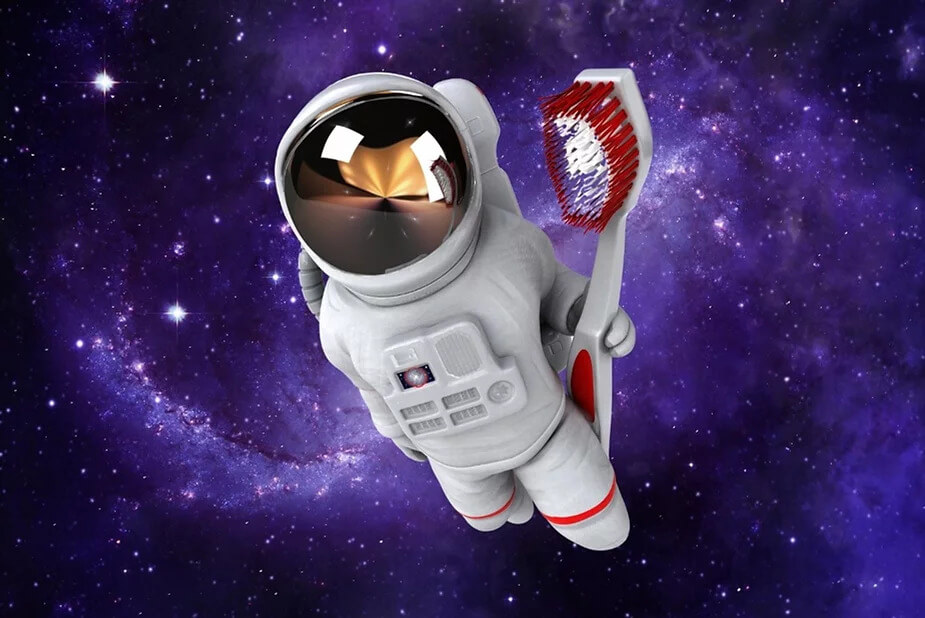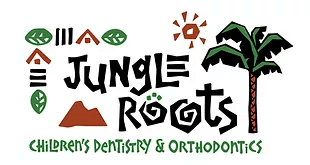
One of the coolest jobs in the world is being an astronaut. You get to use cutting-edge technology, work with some of the best and brightest people in the world and, of course, you get to go to outer space!
But not everyone can just sign up at NASA and become an astronaut. First of all, you have to be really smart. Second, you have to be in peak physical shape to be able to withstand the difficult conditions of living and working in space. The requirements and tests needed to become an astronaut are pretty extensive, so even if you are smart and fit it’s not a guarantee that you’ll get in. As of November of 2021, out of the billions of people who have ever lived, only 600 people had been to space!
They are, however, human like you and me, which means they still need to eat, drink, sleep, and do all the other things humans normally do every day. One of those things is brushing teeth! Let’s take a look at how astronauts accomplish this simple, daily task when they’re in outer space.
The biggest obstacle astronauts have to deal with in space is the lack of gravity, something we here on Earth take for granted. If they would simply squeeze toothpaste out of its tube, or turn on a faucet for water, those things would just float in the air! So, as with everything they do when living in space, they have to adjust to a zero-gravity reality.
In 2013, Canadian Astronaut Chris Hadfield posted a video to YouTube demonstrating how he brushes his teeth on the International Space Station.

"We don't have running water here in the Space Station,” he says in the video. “You can't have a tap or a sink because water would flow everywhere. So, what do you do to wet your toothbrush and where do you spit afterward?"
Hadfield then shows us exactly how he does it. First, he squeezes some water out of a bag, catches the floating water with the toothbrush, and lets the water soak in. Next, he applies some toothpaste onto the brush – making sure that it doesn’t float away! – and begins brushing.
So far so good, right? Seems pretty reasonable, and close to the same way you’d brush your teeth here on Earth. But, once he’s done brushing his teeth, he does something different – he swallows the toothpaste!
He explains it this way. “It's edible. Won't kill you. And what else am I going to do? Put it in a rag and have a dirty rag? Doesn't make any sense." While slightly gross, that does make sense!
There are a few other differences - and it’s always fun to see floating water bubbles - so take a look at the video if you haven’t already!
NASA has a long history of being able to translate its technology to uses other than space travel, and dentistry is no exception. For example, the technology developed by NASA scientists has made it easier to identify disease in teeth and decontaminate water more effectively.
One really cool dentistry innovation that came from NASA is the use of lasers. NASA uses lasers for all types of space work, like connecting sensors for satellites, cutting hard and soft materials with incredible accuracy, and looking into deep space.
Lasers have been used in dentistry for all types of applications as well, like removing tooth decay, reshaping gums affected by disease, and teeth whitening. Lasers have not only improved the field of dentistry, but they’ve also made trips to the dentist less painful. Some dentists have replaced using drills and other metal tools with laser technology.
And recently, a special kind of toothpaste that was developed by NASA to help repair and regenerate bone enamel in the teeth of astronauts has become available to the general public. Called Nano hydroxyapatite (try saying that five times fast!), this special toothpaste formula is perfect for people who have sensitive teeth.
Humans will never stop being curious about life and the world around us. As explorers, our ancestors traveled by foot and eventually built boats, cars, and planes to help them reach every corner of the Earth. As soon as we explored all of the areas of our planet (with a few exceptions like the deepest parts of our oceans), our gaze has turned to the stars above as the next frontier to be conquered.
If you think about it, it’s pretty amazing that we went from the first controlled flight by the Wright brothers in 1903 to landing a man on the moon in 1969 – that’s only within one normal lifetime! We have the technology to live and work in space and have sent several rockets to Mars that have successfully landed rovers. (Say Hi to Spirit and Opportunity!) Soon, we will be sending manned missions to our red neighbor.
Before we are able to do that safely, however, there are a few outstanding issues that we still need to figure out. A major concern for the scientists and researchers that are at the forefront of taking us further into space is the health and well-being of the astronauts who will do the exploring. The conditions of deep space and zero gravity are very harsh for humans, and that includes the health of teeth.
Once we are able to ensure that our astronauts will be safe and healthy on board a spaceship and on Mars for months, if not years, they will lead our species to our next great achievement. Let’s just hope that they don’t forget to pack their toothbrushes!
Ready to rocket to us for your next dental appointment? Schedule your visit today!

At Jungle Roots Children’s Dentistry & Orthodontics, we strive to provide the highest comprehensive pediatric and orthodontic dental care in a unique, fun-filled environment staffed by a team of caring, energetic professionals. We believe the establishment of a “dental home” at an early age is the key to a lifetime of positive visits to the dentist.
